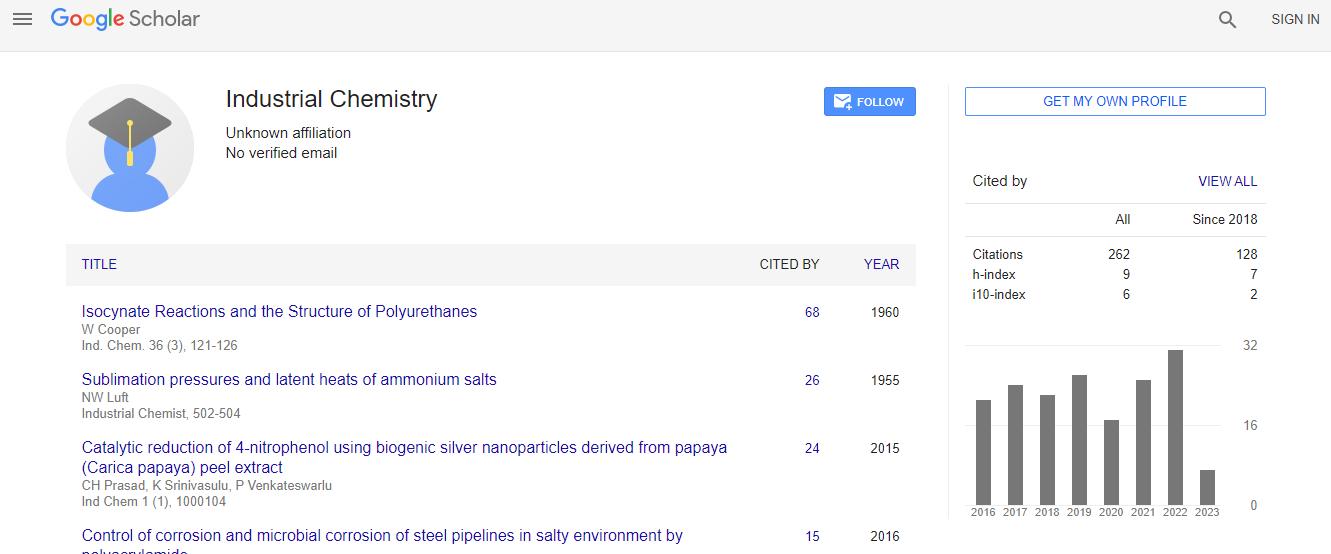Our Group organises 3000+ Global Conferenceseries Events every year across USA, Europe & Asia with support from 1000 more scientific Societies and Publishes 700+ Open Access Journals which contains over 50000 eminent personalities, reputed scientists as editorial board members.
Open Access Journals gaining more Readers and Citations
700 Journals and 15,000,000 Readers Each Journal is getting 25,000+ Readers
Google Scholar citation report
Citations : 262
Industrial Chemistry received 262 citations as per Google Scholar report
Indexed In
- Index Copernicus
- Google Scholar
- RefSeek
- Directory of Research Journal Indexing (DRJI)
- Hamdard University
- EBSCO A-Z
- OCLC- WorldCat
- Scholarsteer
- Geneva Foundation for Medical Education and Research
- Euro Pub
Useful Links
Recommended Journals
Related Subjects
Share This Page
Wetting of the coated surface: Superhydrophobic surface and SLIPS
International Conference on Industrial Chemistry
Do Hyun Kim
KAIST, Republic of Korea
ScientificTracks Abstracts: Ind Chem
Abstract
Superhydrophobic surface has properties of extreme water repellency, showing a very high water contact angle greater than 150�?° and a very low water drop roll-off angle less than 10�?°. Water drops on a superhydrophobic surface can roll around freely, while keeping the surface clean by detaching and removing dust from the surface. These surfaces can be easily found in nature, such as a lotus leaf, a dragonfly and a water strider. There are many applications of these unique features such as selfcleaning, drag-reduction, a stain-free fabric, water-oil collecting system, and droplet guiding system. We present methods for the fabrication of stable and transparent superhydrophobic surface and applications of superhydrophobic surfaces.To determine the superhydrophobicity of the surface, usually a contact angle of a water drop on a superhydrophobic surface is measured by sessile drop method. But it is not a simple task because a roll-off angle is very low. We examine the effects of drop size and measuring condition such as the use of a needle or defects on the static contact angle measurement on a superhydrophobic surface. Also, we examine the limitations of Youngâ�?�?s equation, the Wenzel equation, and the Cassie-Baxter equation, which are widely used for superhydrophobic surface.While superhydrophobic surfaces have desired properties for many applications, one of the requirements for the superhydrophobicity is hierarchical morphology with micron-to-nanoscale roughness, which reduces the strength of the structure. SLIPS (Slippery liquid infused slippery surface), similar to the superhydrophobic surface with respect to the low contact angle hysteresis but with a smaller static contact angle, can be much more resistant to the external forces. We also present the fabrication methods and some applications of SLIPS.Biography
Do Hyun Kim is the Professor of department of Chemical and Biomolecular Engineering at KAIST since 1991. He received his ScD in Chemical Engineering from MIT. He served the President of the Korean Society of Rheology in 2012. He is currently the Director of Energy and Environment Research Center at KAIST and a member of National Academy of Engineers of Korea. His present research focuses on the fabrication of functional surfaces, development of process for PET recycling, design of novel microfluidic devices, application of Taylor-Couette flow, detection of tumor cells and catalytic and electronic application of 2-d and 3-d structure.
Email: dohyun.kim@kaist.edu

 Spanish
Spanish  Chinese
Chinese  Russian
Russian  German
German  French
French  Japanese
Japanese  Portuguese
Portuguese  Hindi
Hindi 